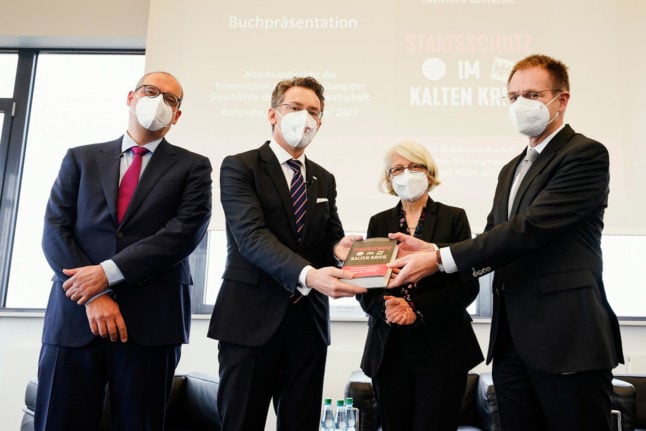NAZIS
French Uni ‘may be storing Nazi victims’ skeletons’
A new documentary about the scale of Nazi medical experiments has reopened old wounds in France as one of the country's leading universities investigates whether its stores still contain the remains of some Jewish victims.
Published: 3 February 2018 10:14 CET

The main university building at the University of Strasbourg. Photo:Jonathan Martz/Wikimedia Commons
Dr Michel Cymes, the star of a French television medical advice programme, believes that the remains of some of the 86 Jews tortured and mutilated by SS doctor August Hirt may still be in the anatomy collection of the University of Strasbourg.
He first raised the theory in his 2015 bestseller, “Hippocrates in Hell”, and repeated the claim in a new film of the same name shown on French TV this week.
The documentary, which trended on Twitter after it was broadcast, raised awkward questions about how part of the “Jewish skeleton collection” Hirt assembled at the university during the war may have survived in its stores.
The remains of Jews on which Hirt tested mustard gas at the Natzweiler-Struthof concentration camp near the Alastian city were supposed to have been buried after it was liberated in 1944.
But after Cymes' claims, the university is now conducting an inquiry using outside experts into the contents of 20 boxes found in its collection which bear Hirt's name.
The Swiss-born anatomist was “one of the worst Nazi figures”, according to Dr Raphael Toledano, a specialist on Nazi medical experiments. He was convinced that the Jewish race was on the point of extinction and
wanted to study the skulls of “Judeo-Bolsheviks”.
Cymes, both of whose Polish-born grandfathers perished at Auschwitz, said he had little idea how extensive Nazi medical experiments had been until he started his own investigation.
“I knew about doctors like Josef Mengele and Carl Clauberg and I thought they were two or three others like that, but then I discovered how vast the phenomenon was,” he told AFP.
His eyes were opened when he began looking in detail at the Nuremberg trials of 23 doctors which began in 1946, and in particular a postwar account of the Nazis' activities by the French naval physician, Francois Bayle.
His now almost forgotten book was a “mine of information”, Cymes said. “He noted down everything he heard, it's encyclopaedic, an enormous piece of work”.
When he came to write his own book Cymes said he tried to use his medical knowledge to “describe what the victims would have felt so that people would realise the suffering of these (human) guinea pigs”.
Nearly 70 percent of German doctors were members of the Nazi party, according to Cymes' documentary.
From 1933 onwards when Hitler came to power, medical ethics “were turned upside down”, Cymes said. “The individual was nothing, the people was everything.”
The small number of doctors tried for war crimes at Nuremberg either worked in concentration camps or used prisoners for medical experiments of “unspeakable cruelty”, said Telford Taylor, the prosecutor at the trials.
Others took part in the “Aktion T4” programme to “eliminate people were considered to carry hereditary illnesses”, said Sorbonne historian Johann Chapoutot, who reckons that between 70,000 and 200,000 died in the push between 1941 and 1945.
In the film, Cymes used testimony from experts such as Evelyne Shuster, of the University of Pennsylvania, and the surgeon and historian Yves Ternon from the University of Montpellier to show the scale of the cruelty and slaughter.
He concentrated on the atrocities committed by Karl Gebhardt, the personal physician of SS chief Heinrich Himmler, and his assistant Dr Herta Oberheuser.
But he also noted how the head of the “Aktion T4” programme, Viktor Brack, wanted to sterilise all Jews using X-rays, which he thought “be good value for money”, writing to Himmler that it could be “carried out on several thousand subjects in a very short time”.
While Sigmund Rascher, the SS doctor at the Dachau camp near Munich, tested how the body stood up to the cold and a lack of oxygen.
Cymes said that the documentary and the investigation into Hirt will not be the end of his inquiries.
“The subject is very personal for me and even though it is psychologically hard maybe I will continue digging for other films,” he said.
Url copied to clipboard!


 Please whitelist us to continue reading.
Please whitelist us to continue reading.